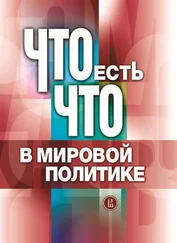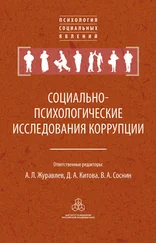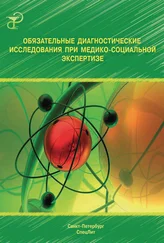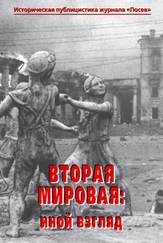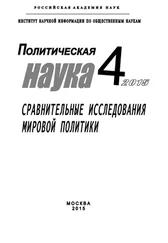Webb, John the Baptizer , с. 307–348; см. также с. 250–254
Современный обзор: Evans, «Baptism of John».
Там же, с. 45; см. также: Webb, John the Baptizer , с. 184–189, 194–196; Havrelock, «Jordan River», с. 172–184; ср.: Brown («What Was John», особ. с. 41–42), где автор подвергает критике несколько аспектов довода о ритуальном очищении.
Brown, «What Was John», с. 45, прим. 25; ср.: Jürgen Becker, Johannes der Täufer und Jesus von Nazareth (BibS[N] 63; Neukirchen-Vluyn: Neukirchener Verlag, 1972), с. 39–40; см. также: Webb, John the Baptizer , с. 103–104, 197–202, 206.
Это, тем не менее, не указывает на то, что воды реки Иордан считались неподходящими для ритуала очищения. Brown, «What Was John», с. 40–42; ср.: Webb, John the Baptizer , с. 131, прим. 126. Уэбб в качестве примеров литературных и исторических произведений эпохи Второго Храма, в которых упоминается погружение в Иордан, приводит свидетельство Иосифа Флавия ( Жизнь 11–12) и апокриф «Житие Адама и Евы» (с. 112, 122).
Havrelock, «Jordan River», с. 171; см. также с. 192. Хэверлок лишь подчеркивает это, утверждая, что «в Еврейской Библии отсутствует представление об утрате изначальной идентичности или прошлого после признания Бога Израиля» (с. 201).
О «ритуализации через нарратив» см. ниже.
См. также: Havrelock, «Jordan River», с. 197–200; ср.: Fritz, 1 and 2 Kings , с. 259–260.
См., напр.: Federlin, Béthanie , цит. по: Riesner, «Bethany», с. 38.
Itinerarium Egeriae 10.3 (CCSL 175, с. 50): «pervenimus ergo usque ad eum locum Iordanis ubi filii Israhel transierant»; Wilkinson, Egeria’s Travels, с. 105.
Itinerarium 9 (CCSL 175, с. 133): «in ipso loco transierunt filii Israhel». Несколько сохранившихся свидетельств пронесли это коллективное воспоминание через историю, см.: Abbot Daniel (John Wilkinson with Joyce Hill and W. F. Ryan, eds., Jerusalem Pilgrimage 1099–1185 [London: Hakluyt Society, 1988], с. 136–137); W. F. Lynch, Narrative of the United States’ Expedition to the River Jordan and the Dead Sea (6 thed.; Philadelphia: Lea & Blanchard, 1849), с. 255. Другое название монастыря св. Иоанна, Каср аль-Йехуд, также хранит в себе воспоминания о переходе евреев через Иордан в районе брода Эль-Махтас. См.: Riesner, Bethanien , с. 26.
Webb, John the Baptizer , с. 364. С исторической и социологической точки зрения для Уэбба остается открытой возможность того, что Иордан не был единственным местом Иоаннова служения (с. 365: мое собственное согласие с этим утверждением см. выше), но, когда Иордан упоминается, он становится важным символическим компонентом повествования. Он продолжает: «А подобное изменение в местоположении может означать лишь , что его служение в этом месте не охватывало все элементы упомянутого символизма» (с. 365, курсив добавлен).
Gray, I and II Kings , с. 465–466; Marsha C. White, The Elijah Legends and Jehu’s Coup (BJS 311; Atlanta: Scholars Press, 1997), с. 32–33, 41–42; Antony F. Campbell and Mark A. O’Brien, Unfolding the Deuteronomistic History: Origins, Upgrades, Present Text (Minneapolis: Fortress, 2000), с. 411–412. Более поздним периодом пассаж датируют: Alexander Rofé, The Prophetical Stories: The Narratives about the Prophets in the Hebrew Bible: Their Literary Types and History (Jerusalem: Magnes, 1988), с. 45; Susanne Otto, «The Composition of the Elijah-Elisha Stories and the Deuteronomistic History», JSOT 27.4 (2003): 487–508, особ. 506; есть также исследователи, которые не называют конкретной датировки: Burke O. Long, 2 Kings (FOTL 10; Grand Rapids: Eerdmans, 1991), с. 30; Antony F. Campbell, Of Prophets and Kings: A Late Ninth-Century Document (1 Samuel 1–2 Kings 10) (CBQMS 17; Washington, D. C.: Catholic Biblical Association of America, 1986), с. 103.
О Нав 3–4 см.: Thomas B. Dozeman, «The yam-sûp in the Exodus and the Crossing of the Jordan River», CBQ 58 (1996): 407–416; J. Alberto Soggin, Joshua: A Commentary (OTL; Philadelphia: Westminster, 1972), с. 43–67, особ. с. 54; Volkmar Fritz, Das Buch Josua (HAT I/7; Tübingen: Mohr Siebeck, 1994), с. 41–56.
Я все же полагаю, что девтерономическая история развивалась значительно сложнее, чем изложено здесь (см., напр.: Jeremy M. Hutton, The Transjordanian Palimpsest: The Overwritten Texts of Personal Exile and Transformation in the Deuteronomistic History [BZAW 396; Berlin: de Gruyter, 2009]), представленная здесь концепция учитывает лишь модель двойной редакции девтерономической истории Кросса; см.: Frank M. Cross, Canaanite Myth and Hebrew Epic: Essays in the History of the Religion of Israel (Cambridge: Harvard University Press, 1973), с. 274–289; Richard D. Nelson, The Double Redaction of the Deuteronomistic History (JSOTSup 18; Sheffield: JSOT Press, 1981); Richard E. Friedman, The Exile and Biblical Narrative: The Formation of the Deuteronomic and Priestly Works (HSM 22; Chico, Calif.: Scholars Press, 1981); Baruch Halpern, The Constitution of the Monarchy in Israel (HSM 25; Chico, Calif.: Scholars Press, 1981) и работы нескольких других учеников Кросса.
См., напр.: Dozeman, « yam-sûp in the Exodus»; см. также: Hans-Joachim Kraus, «Gilgal: Ein Beitrag zur Kultgeschichte Israels», VT 1 (1951): 181–199; ET: «Gilgal: A Contribution to the History Of Worship in Israel», Reconsidering Israel and Judah: Recent Studies on the Deuteronomistic History (ed. G. N. Knoppers and J. G. McConville; SBTS 8; Winona Lake, Ind.: Eisenbrauns, 2000), с. 163–178; Soggin, Joshua , с. 51–54; David Daube, The Exodus Pattern in the Bible (All Souls Studies 2; London: Faber & Faber, 1963), 11; ср.: Jan Wagenaar, «Crossing the Sea of Reeds (Exod 13–14) and the Jordan (Josh 3–4): A Priestly Framework for the Wilderness Wandering», Studies in the Book of Exodus: Redaction – Reception – Interpretation (ed. M. Vervenne; BETL 126; Leuven: Peeters, 1996), с. 461–470. Следует отметить, что ханаанское происхождение этого мифологического сюжета не доказывает неизраильский характер мифемы. Как убедительно доказывает Марк Смит, различия в израильской и ханаанской культурах были результатом процесса дифференциации общего ханаанского субстрата, а не принципиального и изначального различия ( The Early History of God: Yahweh and the Other Deities in Ancient Israel [2 nded.; Grand Rapids: Eerdmans, 2002]).
Читать дальше
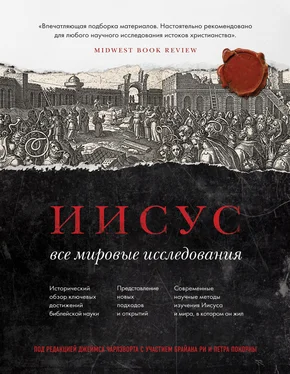
![Коллектив авторов - Что мы думаем о машинах, которые думают [Ведущие мировые ученые об искусственном интеллекте]](/books/31211/kollektiv-avtorov-chto-my-dumaem-o-mashinah-kotorye-thumb.webp)
